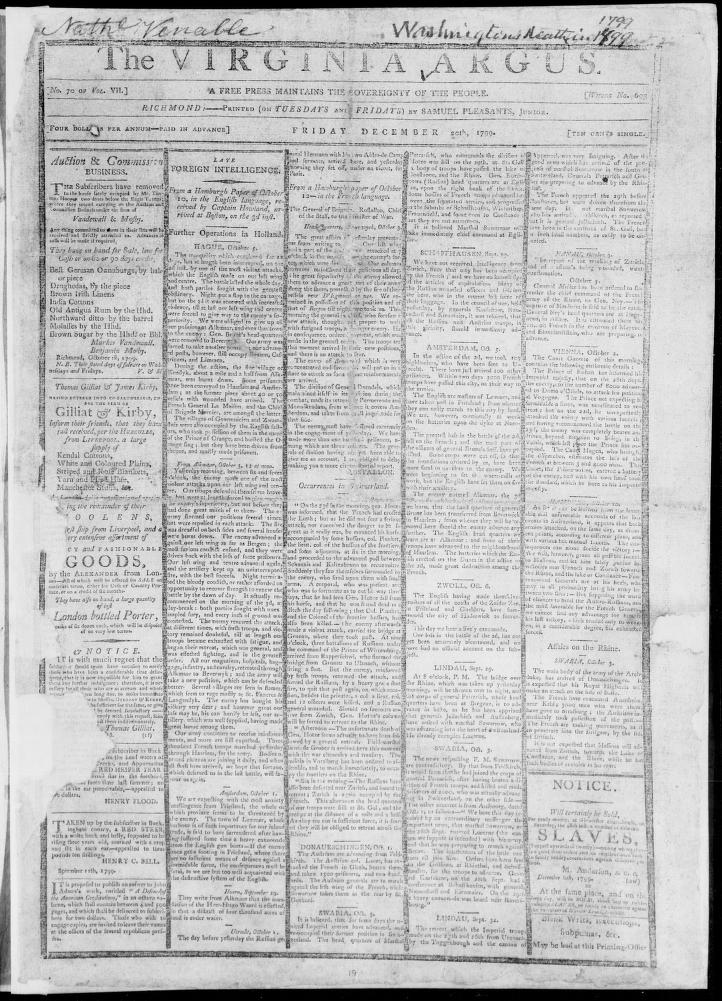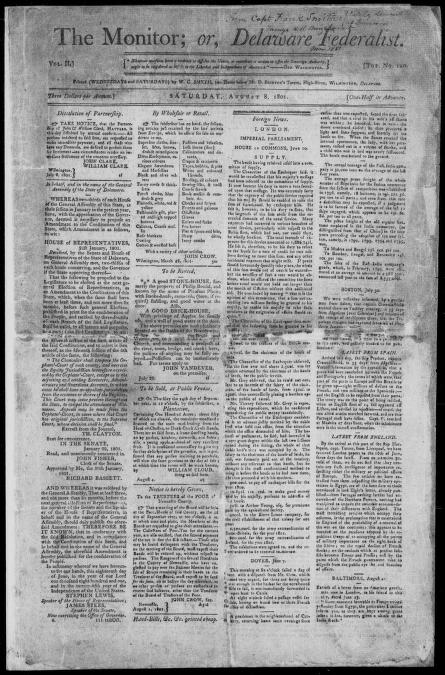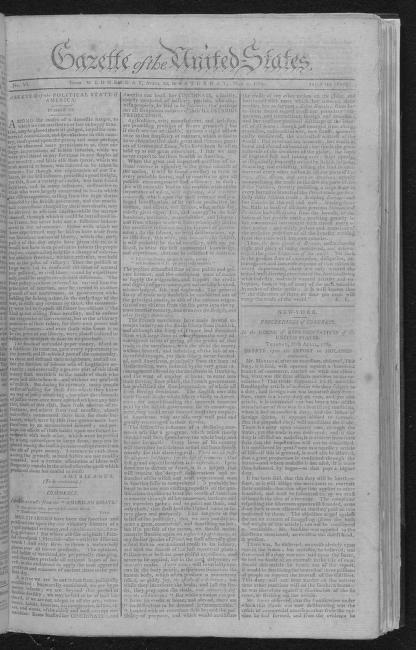This album was created by a member of the TPS Teachers Network, a professional social media network for educators, funded by a grant from the Library of Congress. For more information, visit tpsteachersnetwork.org.
Newspapers during the Revolution
Album Description
This short activity will inspire curious minds to think about how the news was shared in a world before the internet. By exploring different newspapers, students will be able to make inferences and talk about what happened in the time being spoken about but also how the information is presented to the public.
After this, students will have a deeper understanding of the importance and place of newspapers in the colonies during and after the American Revolution. This activity will also help them work on forming arguments about why different pieces of news are more important than others.
This album is connected to another one called Analyzing the Spread of News During and After the American Revolution. They can be done separately or together.
Activity Length
20-25 minutes
Audience
6-8th grade
Essential Questions
How are Revolution Era newspapers similar to and different from today’s newspapers?
What can we learn about the Revolutionary Era by studying its newspapers?
Themes
American Revolution, Colonial Newspapers, Press, Printing, George Washington, Newspapers
Background
Within this site is the narrative of the early post system in the colonies starting around the 1690s. It was improved greatly by Benjamin Franklin before the Revolutionary War. Benjamin Franklin (1753), as part of his time as the Crown's joint postmaster general for the American colonies before the war, started a weekly mail wagon between Philadelphia and Boston. The system was always working to improve and lower costs.
Additional Resources:
These blog posts from the Library of Congress offer secondary and primary source information about the history of printing in the world and Colonial America specifically.
Activity Steps
Image 1 of Virginia Argus (Richmond, Va.), December 20, 1799
Teaching Notes
Essential Questions
Era newspapers similar to and different from today’s newspapers?
What can we learn about the Revolutionary Era by studying its newspapers?
This newspaper has many things, things that may be pulled out, are a business section, foreign affairs and a death announcement of Washington. With details about mourning the president as a nation. With this in mind, for these sources I would give them the time to explore the newspaper. The goal is to build questions and ideas about newspapers and thoughts based on what they find in them.
Reference link: http://www.loc.gov/resource/sn84024710/1799-12-20/ed-1/?sp=1&r=-0.124,-0.02,1.342,0.847,0
Reference note
Created / Published
- Richmond, Va., December 20, 1799
Genre
- Newspapers
Notes
- - Semiweekly
- - Vol. 4, no. 62 (Nov. 19, 1796)-v.23, no. 3174 (Mar. 29, 1815) ; v. 1, no. 2 [1] (Apr. 1, 1815) -v. 2, no. 61 (Oct. 19, 1816).
- - Publisher varies: Samuel M. Pleasants, Nov. 2, 1814-Feb. 1, 1815 ; Philip Du Val & Co., Feb. 15, 1815-Mar. 25, 1815 ; John Burke, Mar. 29, 1815-Jan. 31, 1816 ; John Burke & L.H. Girardin, Feb. 3, 1816.
- - Prospectus for American Standard (Richmond, Va.)--printed in Virginia Argus issue for July 29, 1811.
- - Issues for Nov. 19,1796- called also whole no. 373-<937>.
- - Whole numbering continues while issue numbering ceases, .
- - Supplements accompany some issues.
- - Available on microfilm from University Microfilms International; Microphoto Division of Bell & Howell; the Library of Virginia; and the Library of Congress, Photoduplication Service.
- - Archived issues are available in digital format from the Library of Congress Chronicling America online collection.
- - Also available online.
Image 1 of The monitor, or, Delaware Federalist (Wilmington, Del.), August 8, 1801
Teaching Notes
Essential Questions
Era newspapers similar to and different from today’s newspapers?
What can we learn about the Revolutionary Era by studying its newspapers?
In this source, there are marriage announcements, foreign news, and information from the House of Representatives. With this in mind, for these sources I would give them the time to explore the newspaper. The goal is to build questions and ideas about newspapers and thoughts based on what they find in them.
Reference link: http://www.loc.gov/resource/sn84038116/1801-08-08/ed-1/?sp=1&r=0.012,-0.016,1.047,0.661,0
Reference note
Created / Published
- Wilmington, Del., August 8, 1801
Genre
- Newspapers
Notes
- - Semiweekly
- - Began in 1801; ceased in 1802.
- - Also issued on microopaque from Readex Microprint Corp.
- - Archived issues are available in digital format from the Library of Congress Chronicling America online collection.
- - Description based on: Vol. 2, no. 120 (Aug. 8, 1801).
Image 1 of Gazette of the United-States (New-York [N.Y.]), May 2, 1789
Teaching Notes
Essential Questions
Era newspapers similar to and different from today’s newspapers?
What can we learn about the Revolutionary Era by studying its newspapers?
In this newspaper is the announcement of the inauguration of George Washington and his inaugural speech. This newspaper also is the home of letters to and from Washington. There are also minutes from Congress and an essay by Americus. With this in mind, for these sources I would give them the time to explore the newspaper. The goal is to build questions and ideas about newspapers and thoughts based on what they find in them.
Reference link: http://www.loc.gov/resource/sn83030483/1789-05-02/ed-1/?sp=1
Reference note
Created / Published
- New-York [N.Y.], May 2, 1789
Genre
- Newspapers
Notes
- - Semiweekly
- - No. 1 (Apr. 15, 1789)-no. 104 (Apr. 10, 1790) ; v. 2, no. 105 (Apr. 14, 1790)-v. 2, no. 110 (May 1, 1790) ; v. 2, no. 7 (May, 5, 1790)-v. 4, no. 136 (Sept. 18, 1793) = Whole no. [1]-whole no. 458.
- - Published at Philadelphia, Pa., Nov. 3, 1790-1793.
- - Numbering is irregular.
- - Also issued in microform from Readex Microprint Corp. and on microfilm from the Library of Congress, Photoduplication Service.
- - Archived issues are available in digital format from the Library of Congress Chronicling America online collection.
- - Gazette of the United States & evening advertiser (DLC)sn 83025878 (OCoLC)9855762



